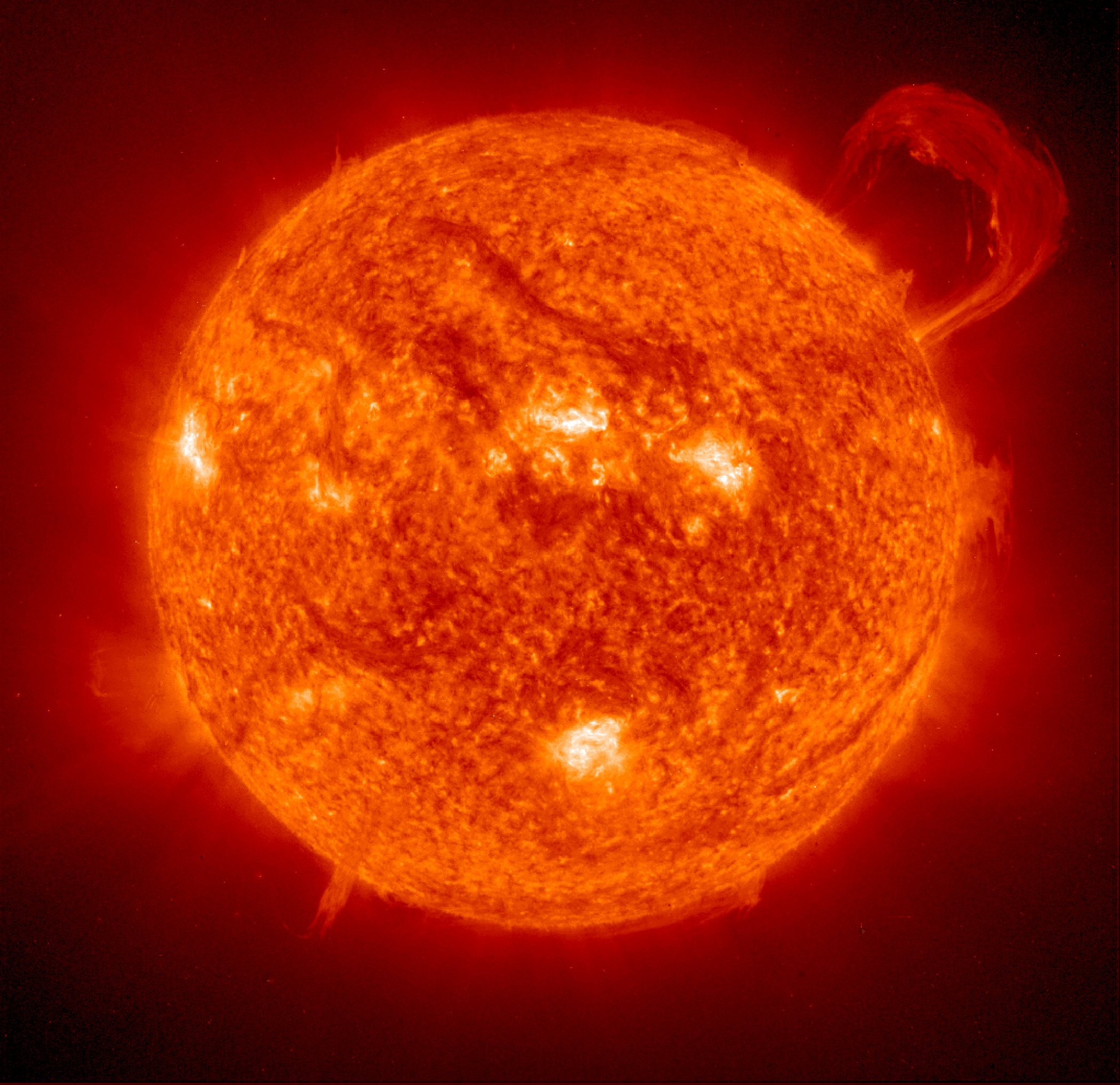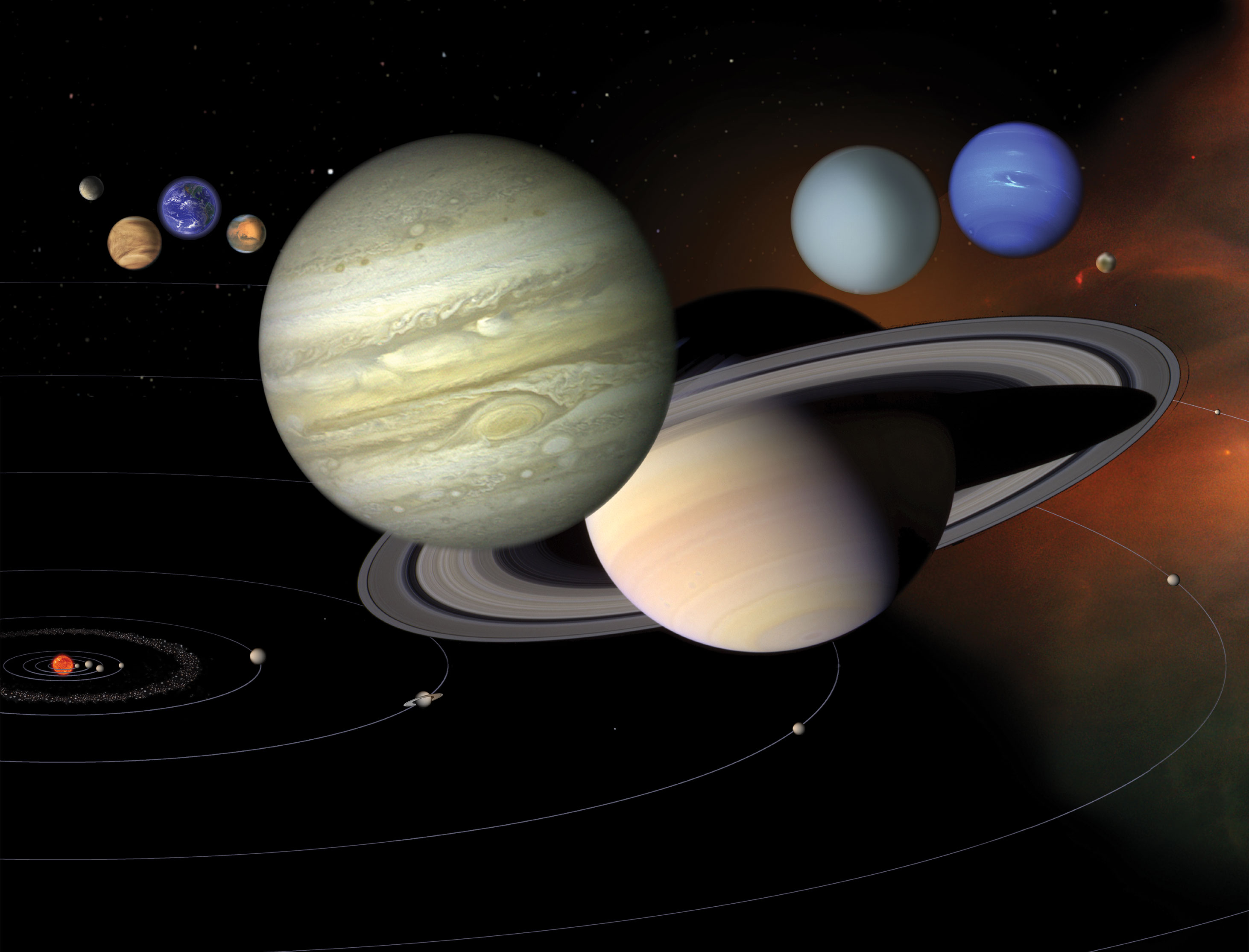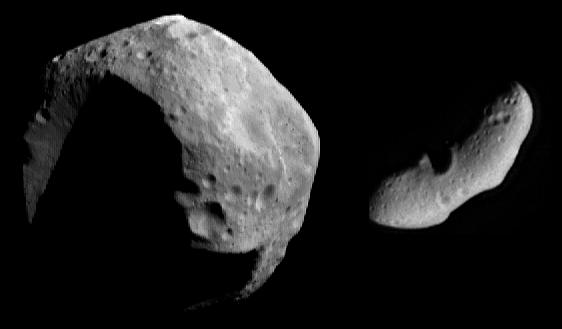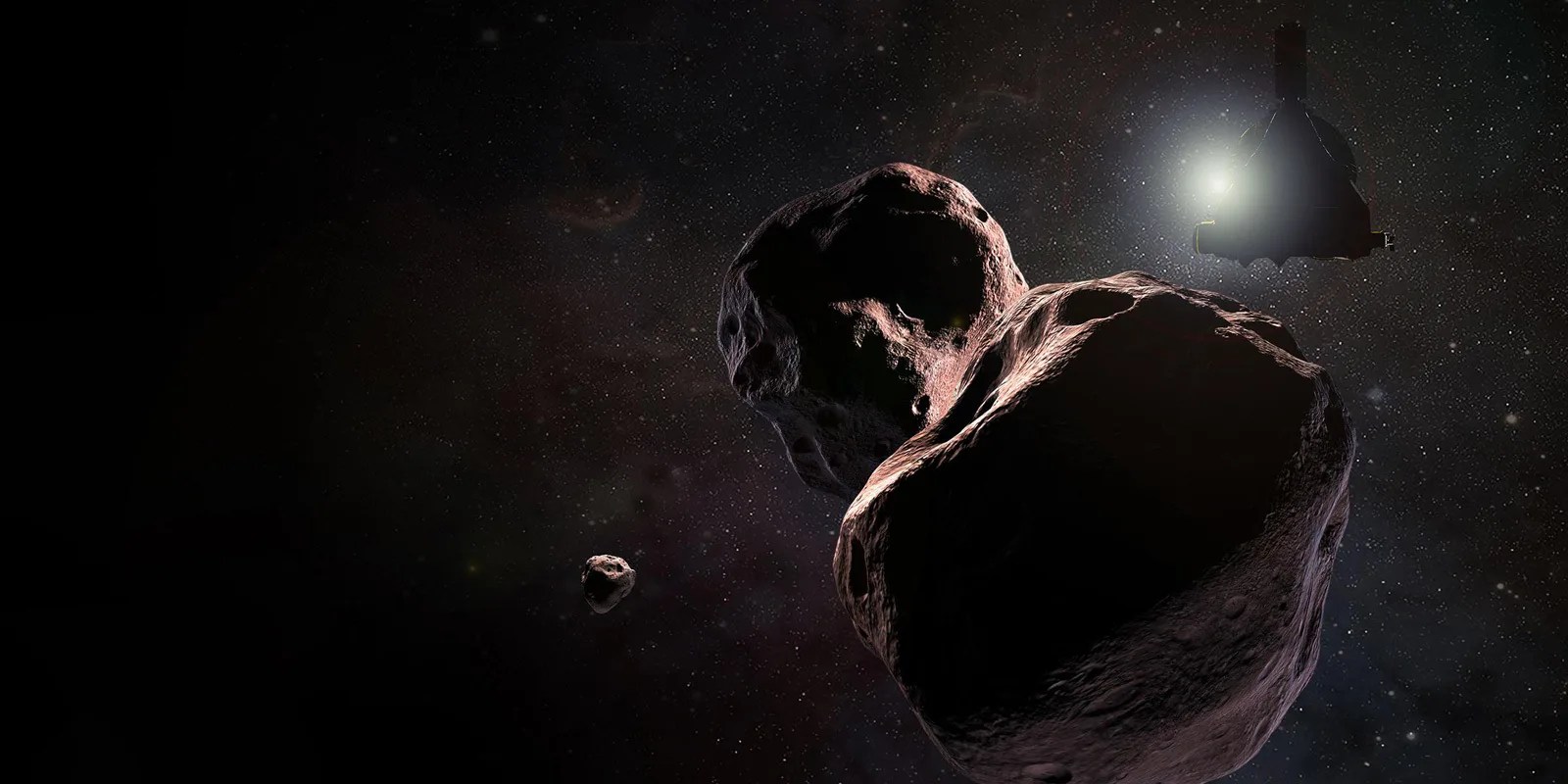Overview: Saturn’s Hexagon
One of the most curious and captivating features on Saturn – an enormous spinning hexagon in the clouds at its north pole – has fascinated scientists and the public alike since our first glimpse of it in the 1980s.
A trove of images and data from the Cassini probe that orbited Saturn from 2004-2017 provided some surprising answers, but not all of them, heightening the mystery even more.
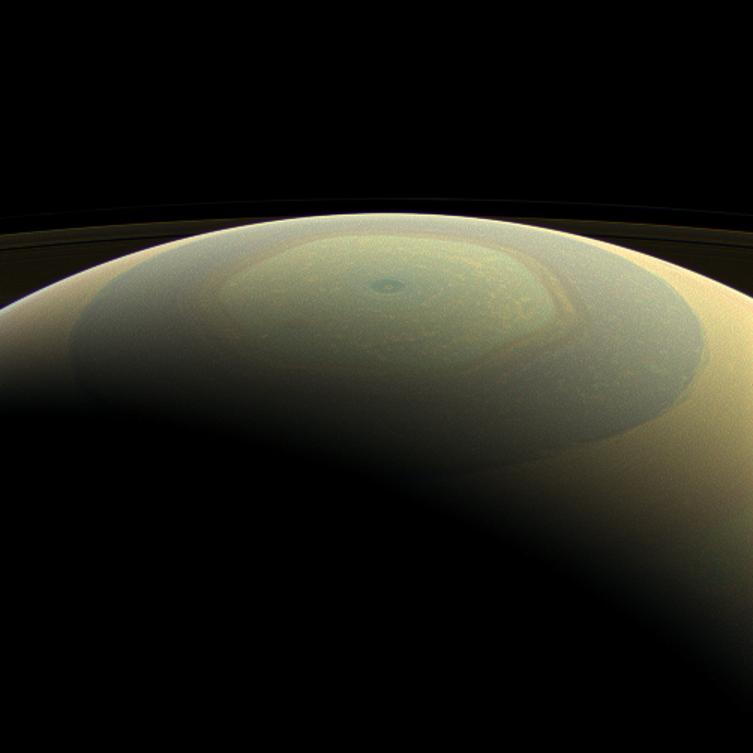
Scientists first observed the six-sided jet stream when the two Voyager spacecraft passed by Saturn in 1980 and 1981. But their trajectories prevented the Voyagers from capturing the entire monstrous hexagon – twice as wide as Earth – in a single image from above. As they flew past, their viewing angle offered only tantalizing glimpses of its edge.
More than 20 years later, when Cassini arrived at Saturn in 2004, the planet’s northern hemisphere was in winter and the hexagon was hidden in shadow. Because Saturn’s seasons last so much longer than those on Earth, scientists had to wait a few more years to see the hexagon in visible light.
So until then, they looked at it a different way.
In 2006 (still winter in Saturn’s north), Cassini’s team studied the hexagon using the Visual and Infrared Mapping Spectrometer (VIMS) instrument on the spacecraft. VIMS could see the hexagon in the dark because it detects infrared wavelengths of light, basically heat generated in the warm interior of Saturn.
Saturn is much farther from the Sun than Earth is, so its year – the time Saturn takes to complete one solar orbit – is about 29 Earth years. Consequently, each Saturnian season lasts more than seven Earth years.
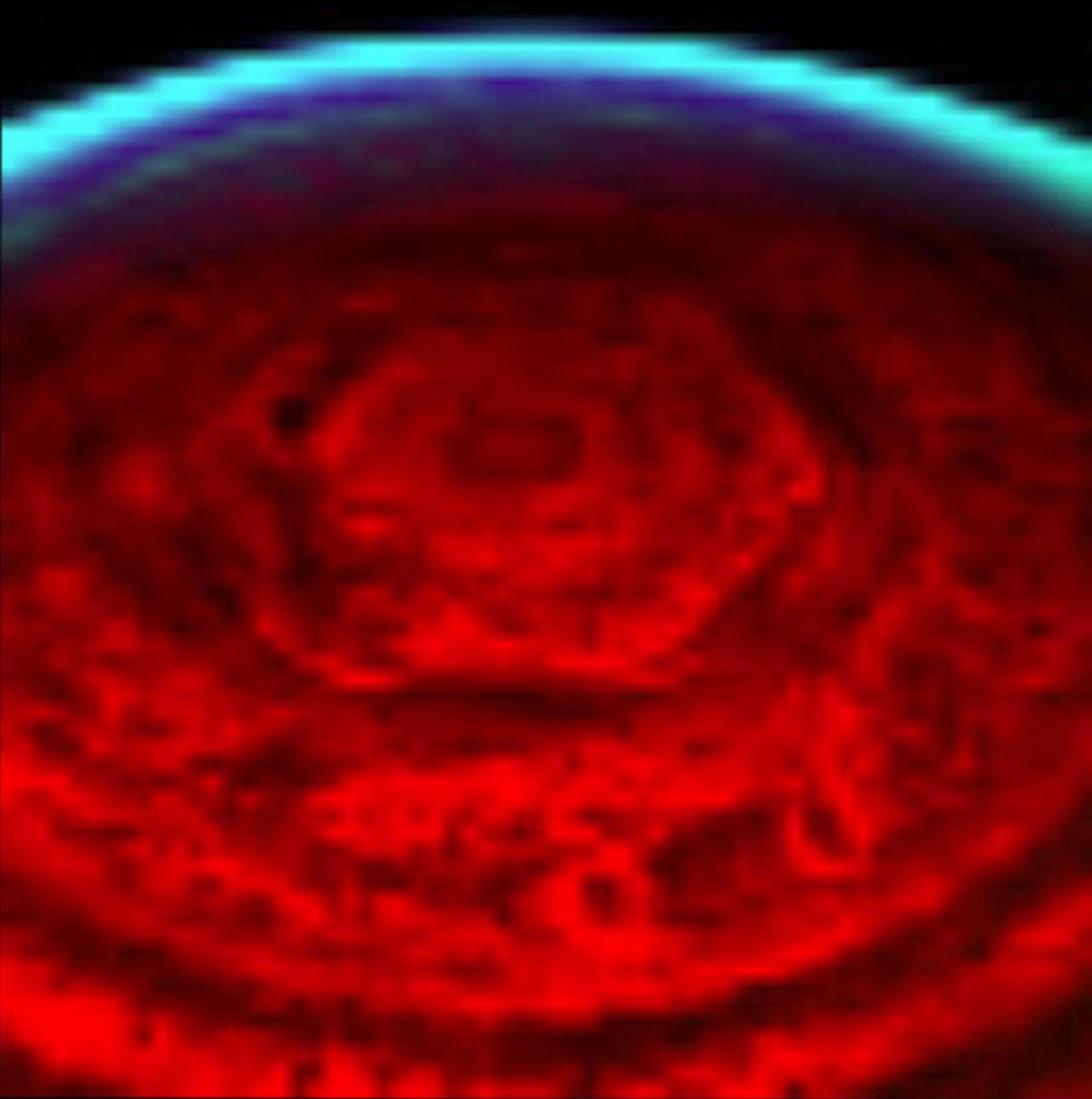
Seasons in the Sun
When Saturn approached its August 2009 equinox, spring – and sunlight – had arrived in the north and the wait was finally over. Cassini examined the hexagon with its main visible-light cameras, the Imaging Science Subsystem (ISS). The ISS instrument had higher resolution than the VIMS instrument, and captured images in unprecedented detail.
Those shots revealed a stunningly symmetric jet stream about 20,000 miles (30,000 kilometers) across, with winds about 300 mph (500 kph). In addition, the hexagon spins around a tight vortex that marks Saturn’s north pole.
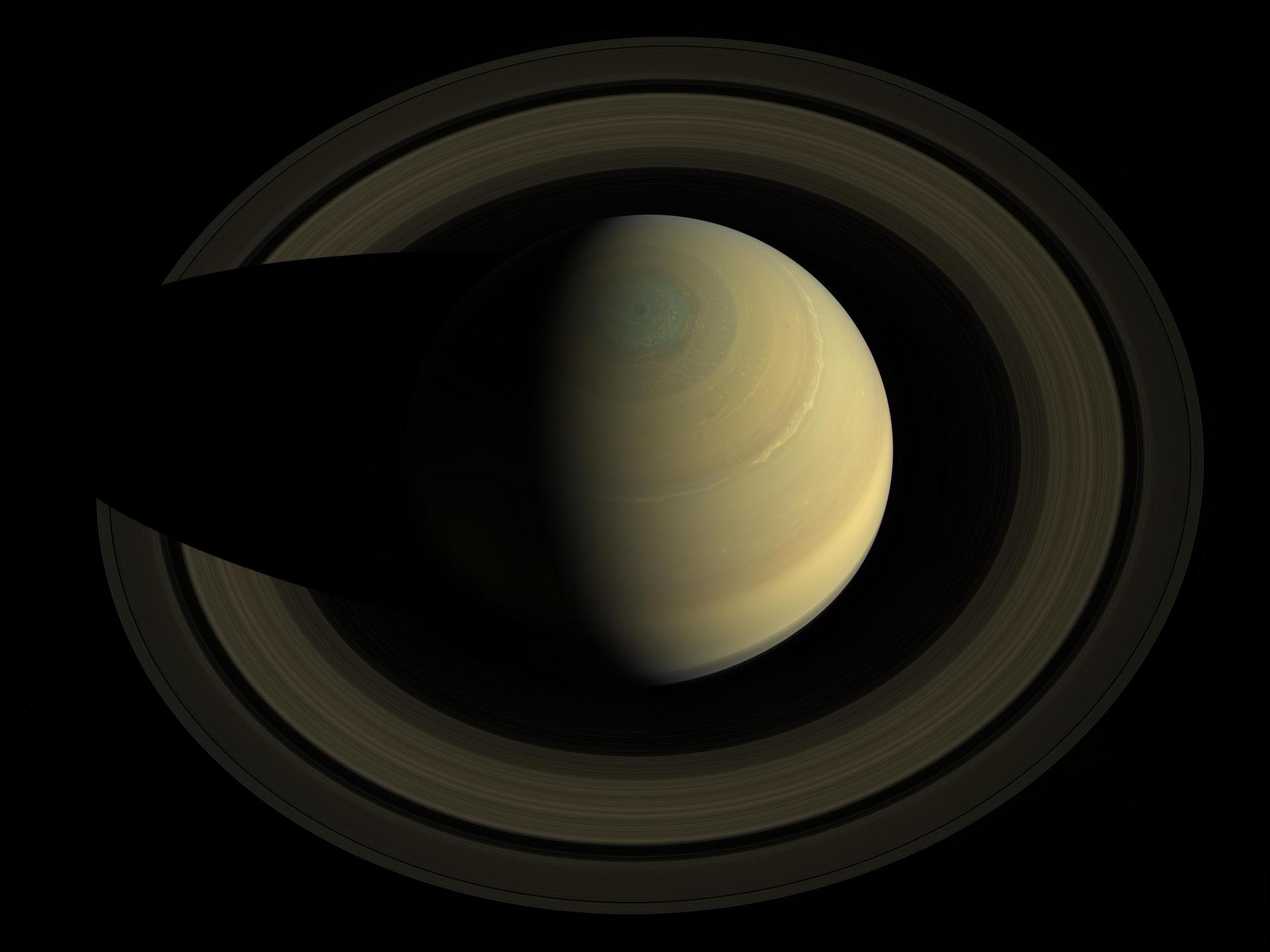
The hurricane-like vortex has an eye about 50 times larger than a typical Earth hurricane, and a maximum wind speed about double that of the strongest cyclones here.
“This is the belly button of Saturn,” said VIMS scientist Kevin Baines, a planetary scientist at NASA’s Jet Propulsion Laboratory. Baines emphasized that, although it resembles a hurricane, Saturn’s north polar vortex is not the same thing because hurricanes on Earth feed on water and heat from Earth’s surface. “But it does have at least the structure of a hurricane, what we call the classic vortex.”
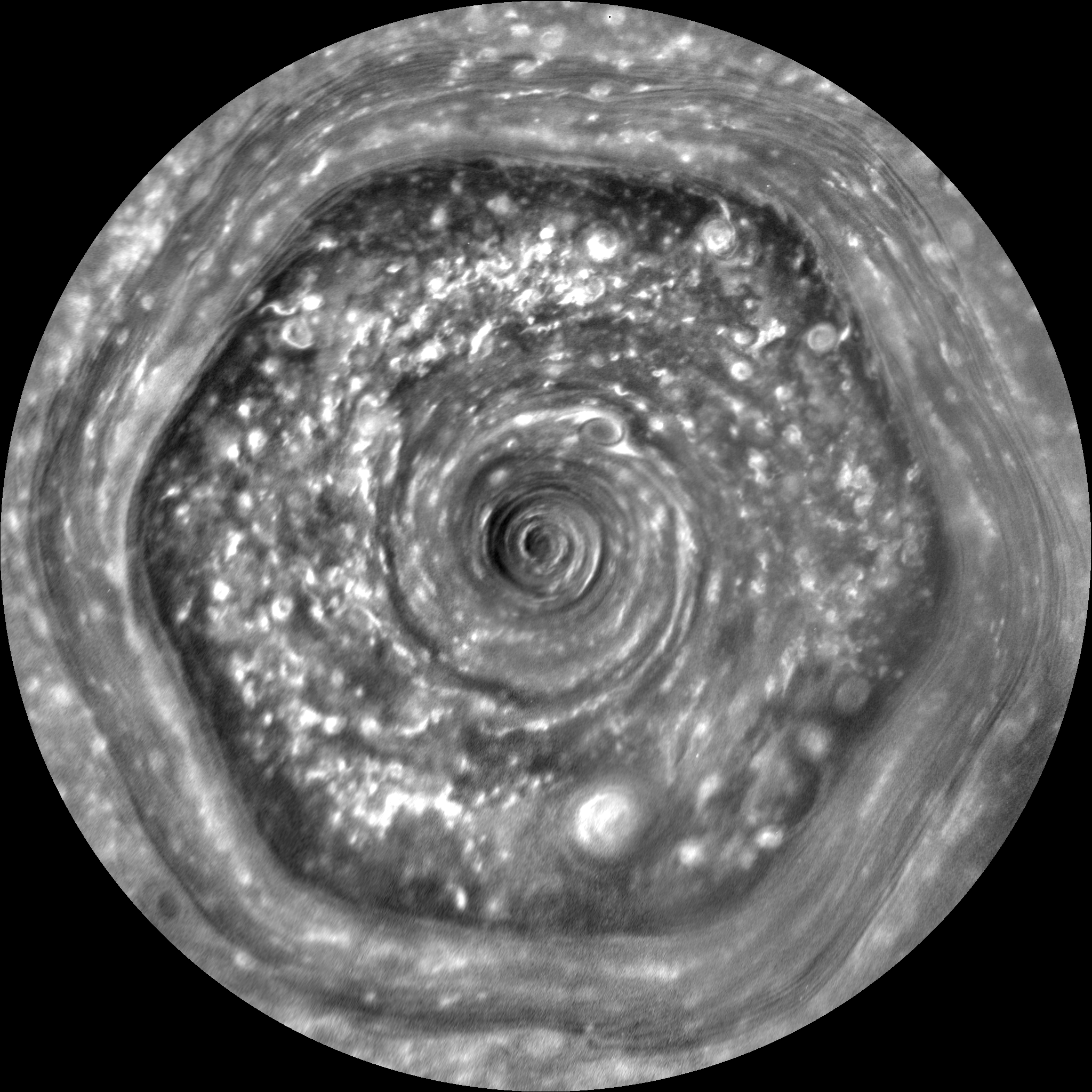
The hexagon itself, however, perplexed scientists. Baines called it “one of the biggest mysteries of the dynamics of Saturn.”
The hexagon has a diameter more than twice the width of Earth. Its sides and angles are roughly symmetrical. For humans accustomed to weather on Earth, such an ordered, geometric pattern might seem curious, or even alien. Then again, maybe Earth is the oddball.
On Earth, jet streams slither and meander with no pattern or symmetry. Weather systems swirl and twirl throughout the globe. But while the atmospheres of both Saturn and Earth follow the same natural laws, different conditions produce different results.
Sunlight drives wind and weather patterns on Earth, and our planet is nearly 10 times closer to the Sun than Saturn is, which means we receive nearly 100 times more sunlight than Saturn. As the Earth spins, the energy it gets from the Sun varies more sharply from day to night than it does on Saturn. Earth’s surface is also non-uniform. We have water, land, ice, and snow, which heat and cool at different rates.
Earth also has an extremely shallow atmosphere compared to Saturn’s, but with towering mountains reaching miles into the sky and disturbing atmospheric flow – the same way large stones in a shallow creek make the water churn and roll.
In short, Earth lacks the conditions for a jet stream to settle into a symmetric shape. But Saturn is a different story. The gas giant has no solid surface, and its composition is far more uniform.
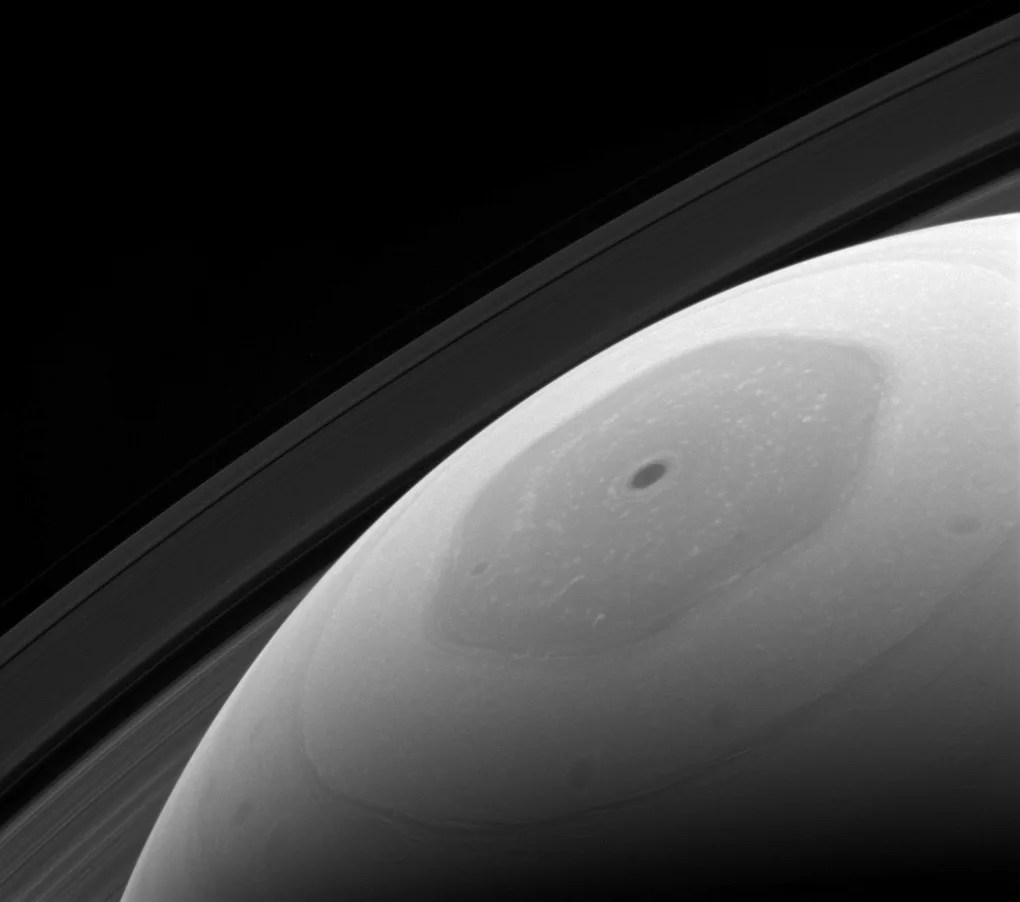
There’s apparently nothing in Saturn’s atmosphere to keep a perfectly natural symmetric shape from forming. Scientists even duplicated the hexagon in a laboratory on Earth using a cylindrical tank of water on top of a slowly rotating table. They produced other shapes, too.
“We can also get squares, octagons and other polygons – it depends on the speed and the different properties of the fluid,” Baines said.
That’s not to say scientists have Saturn’s hexagon all figured out. For some reason, Saturn has a hexagonal jet stream only in the north, not in the south. And while scientists have reproduced the hexagon in the lab, they don’t know why it’s so long-lived.
“The hexagon is just a current of air, and weather features out there that share similarities to this are notoriously turbulent and unstable,” said Andrew Ingersoll, a Cassini imaging scientist from the California Institute of Technology. “A hurricane on Earth typically lasts a week, but this has been here for decades and, who knows, maybe centuries.”
Like a Hurricane
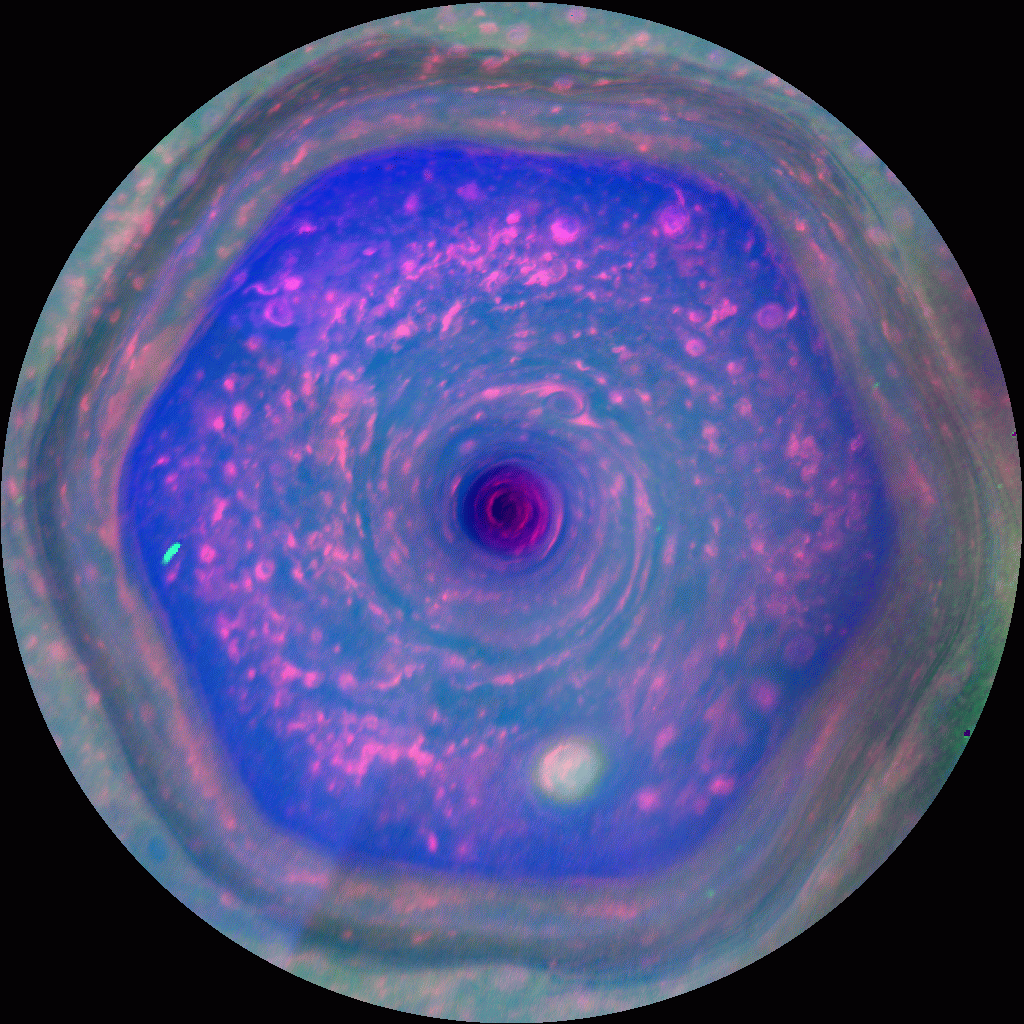
In late 2012, Cassini began making swings over Saturn's poles, giving it the best views yet of the hexagon. The color-filter movie of the hexagon shown above was assembled from eight images Cassini captured over 10 hours on Dec.10, 2012.
“The polar vortex at the hexagon's center – which was discovered by Cassini – is a bit of an enigma,” Baines said.
These highest-resolution views accentuated a wide variety of cloud structures within the hexagon. There’s the massive “hurricane” tightly centered on the north pole, and also numerous small vortices, appearing as reddish ovals. Some of those spin clockwise while the hexagon and hurricane spin counterclockwise. Some of those smaller features are swept along with the jet stream of the hexagon, as if on a racetrack. The biggest of these vortices, seen near the lower right corner of the hexagon and appearing whitish, spans about 2,200 miles (3,500 kilometers), or about twice the size of the largest hurricane ever on Earth.
The hexagon is just a current of air, and [similar] weather features ...are notoriously turbulent and unstable. A hurricane on Earth typically lasts a week, but this has been here for decades – and, who knows – maybe centuries.

andrew ingersoll
Cassini Imaging Team
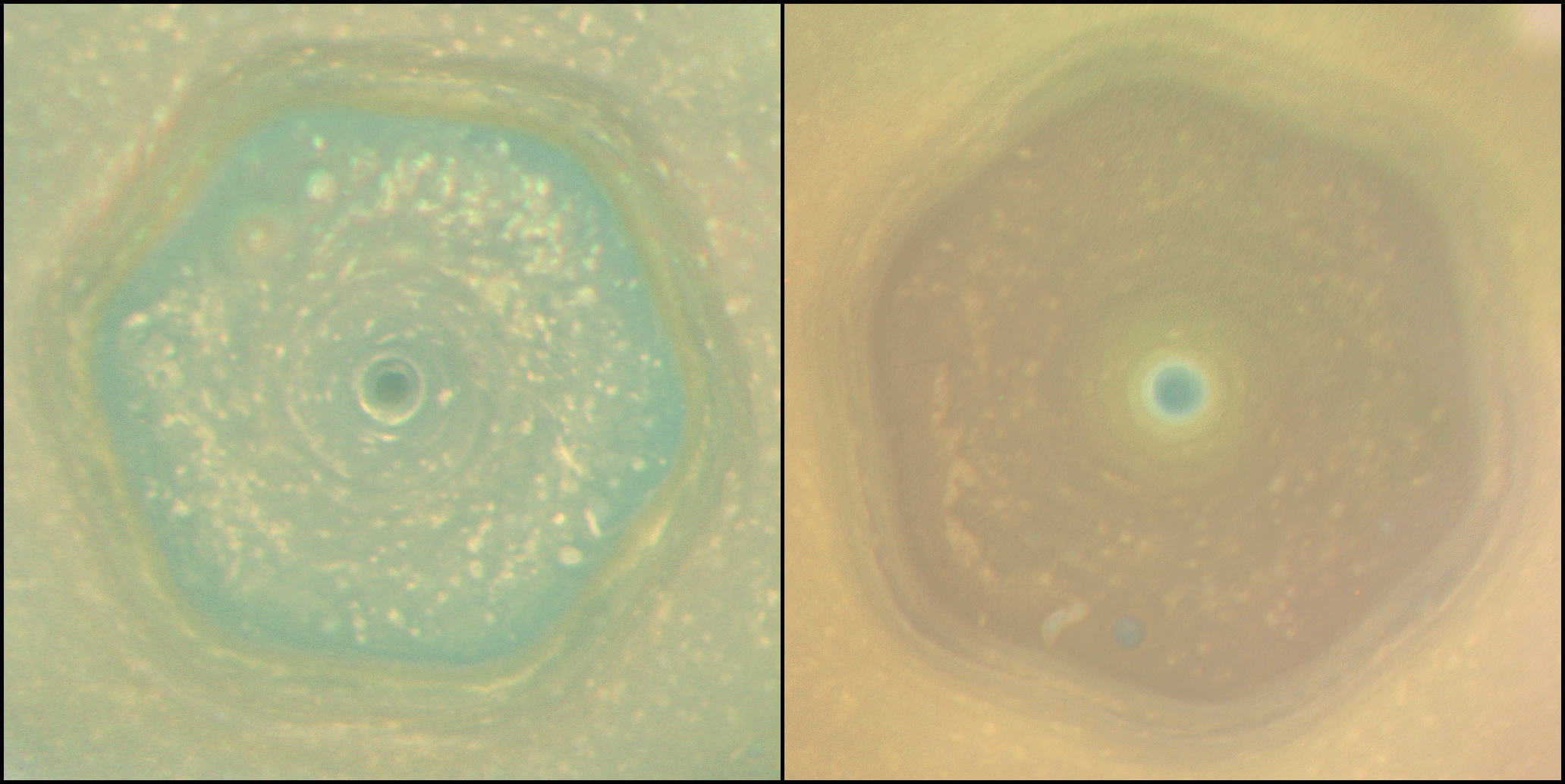
Hazy Shade of Summer
As Saturn’s year progressed, moving from spring toward the summer, the north pole heated up and Cassini showed the hexagon changing color. A bluish-green in 2013 turned to a yellowish haze by the planet’s summer solstice, on May 24, 2017. Solar radiation from the increasing sunlight was breaking apart methane molecules in the atmosphere, which then rearranged into hydrocarbon particles – akin to the formation of smog on Earth – and formed the yellow haze. Researchers found that small haze particles fill the inside of the hexagon, while larger particles dominate outside of it, with the inside and outside being separated by the jet stream that delineates the hexagon.
After 20 years in space and 294 orbits around Saturn, Cassini exhausted its fuel supply. To avoid contaminating moons of Saturn that could have conditions suitable for life, Cassini’s mission team sent the probe on a daring final operation that would seal its fate. After a series of nearly two dozen nail-biting dives between the planet and the icy minefield of its rings, Cassini burned up in Saturn’s atmosphere on Sept. 15, 2017, returning science data to the very end.
Before Cassini’s Grand Finale, Baines was eager to see what further insights could come from the probe’s close-up views. “These last 22 orbits are giving us a unique chance to observe and analyze the hexagon in unprecedented detail,” he said.
And researchers have continued poring over that data, long after Cassini’s end.
Gravity measurements made in Cassini's final orbits showed that the high winds at Saturn's cloud tops – up to 895 mph (1,440 kph) – persist far below, extending 5,000 miles (8,000 kilometers) toward the planet’s interior. Harvard researchers in 2020 used those findings to suggest that a deep supersonic jet stream is pinched on all sides by smaller cyclones and pushed upward, forming the hexagon.
Cassini project scientist Linda Spilker, of NASA’s Jet Propulsion Laboratory, said after the Grand Finale that she’s looking forward "to seeing other new discoveries that remain to be found in the Cassini data.”
“Even after Cassini’s 13 years in orbit around Saturn,” she said, “the mystery and extent of the hexagon continue to grow.”


